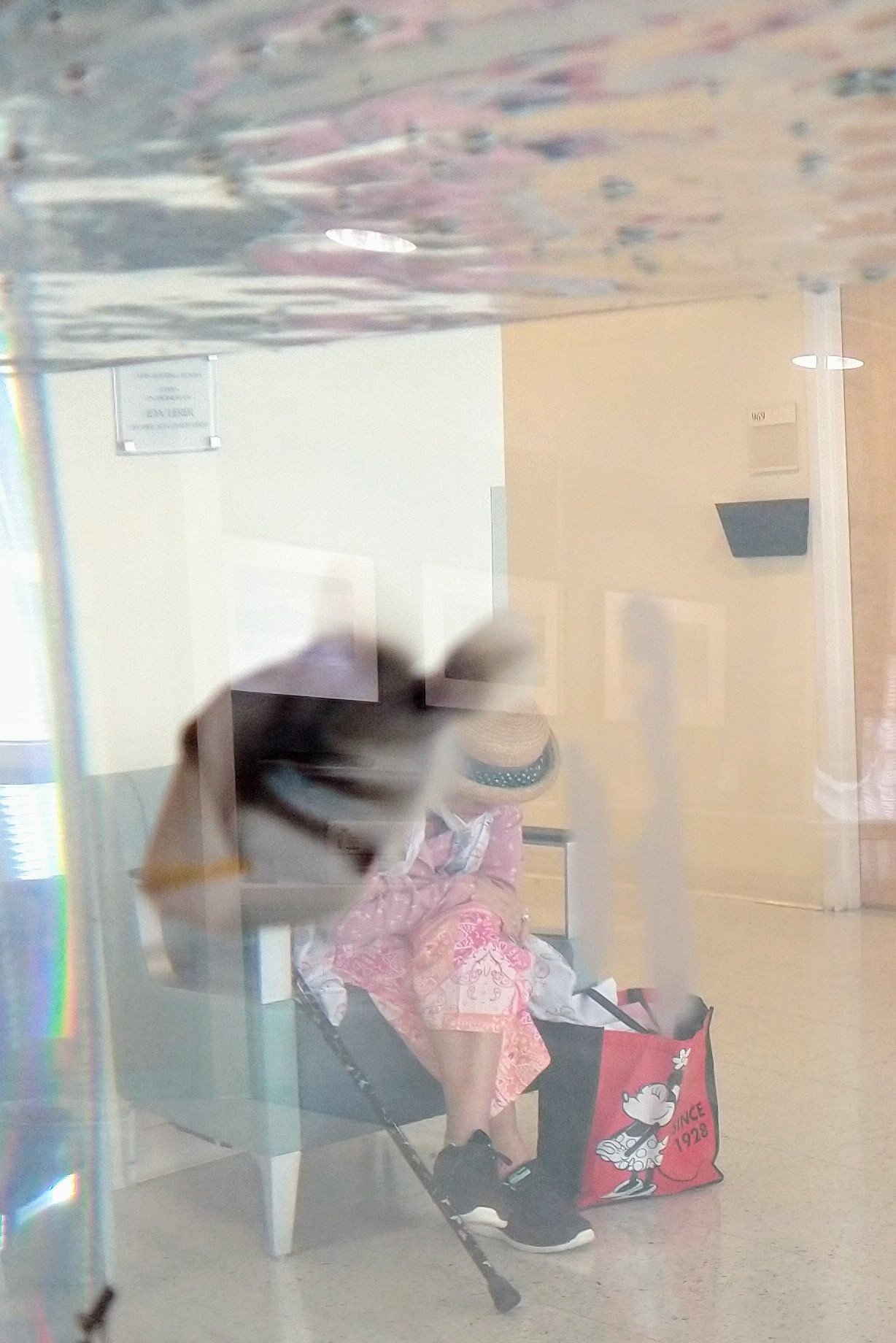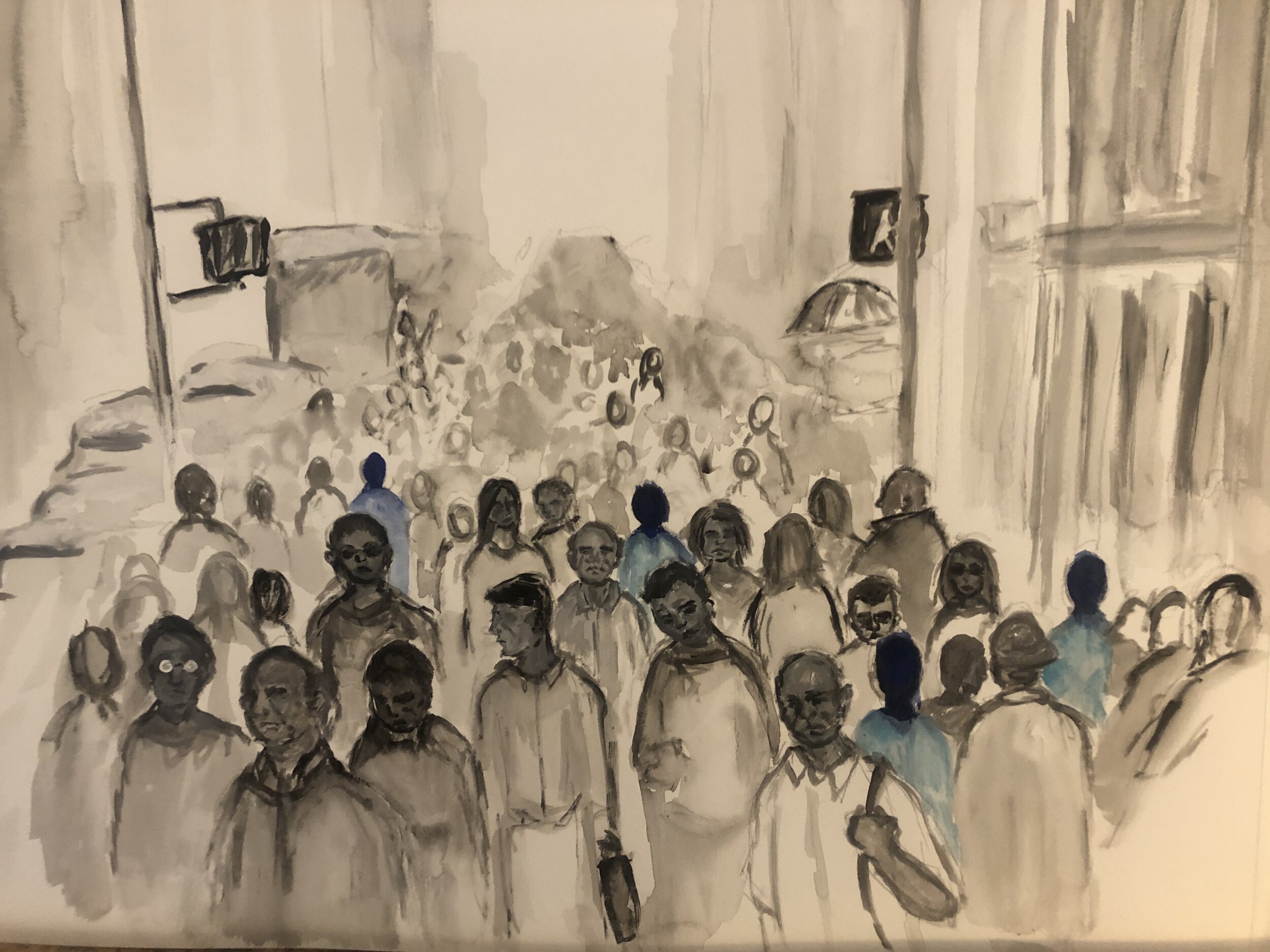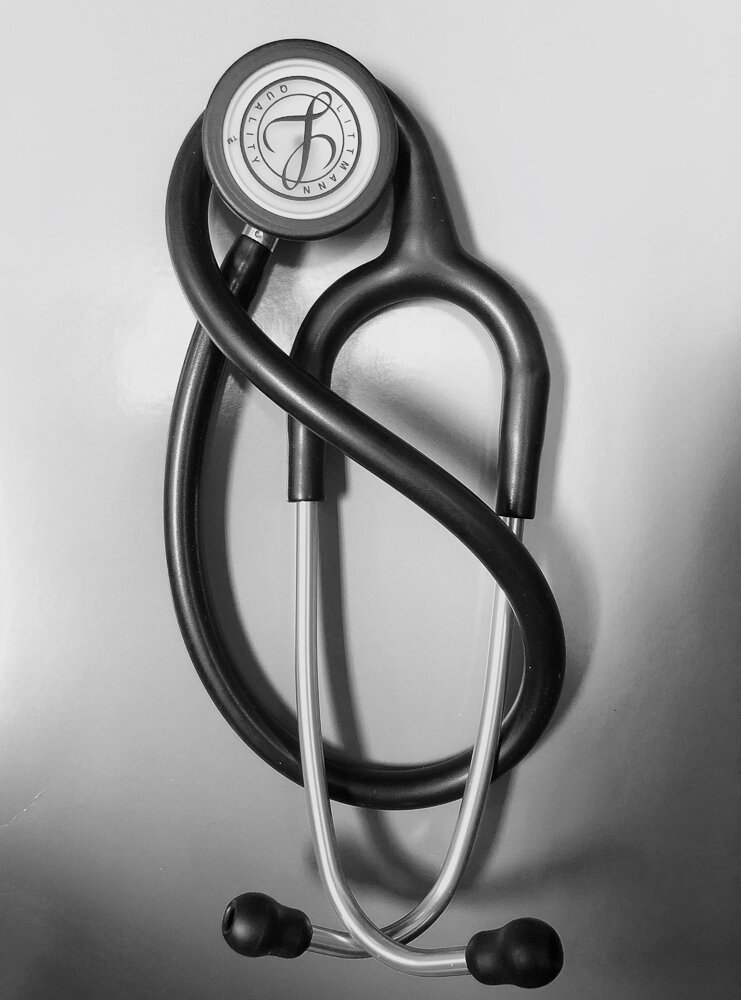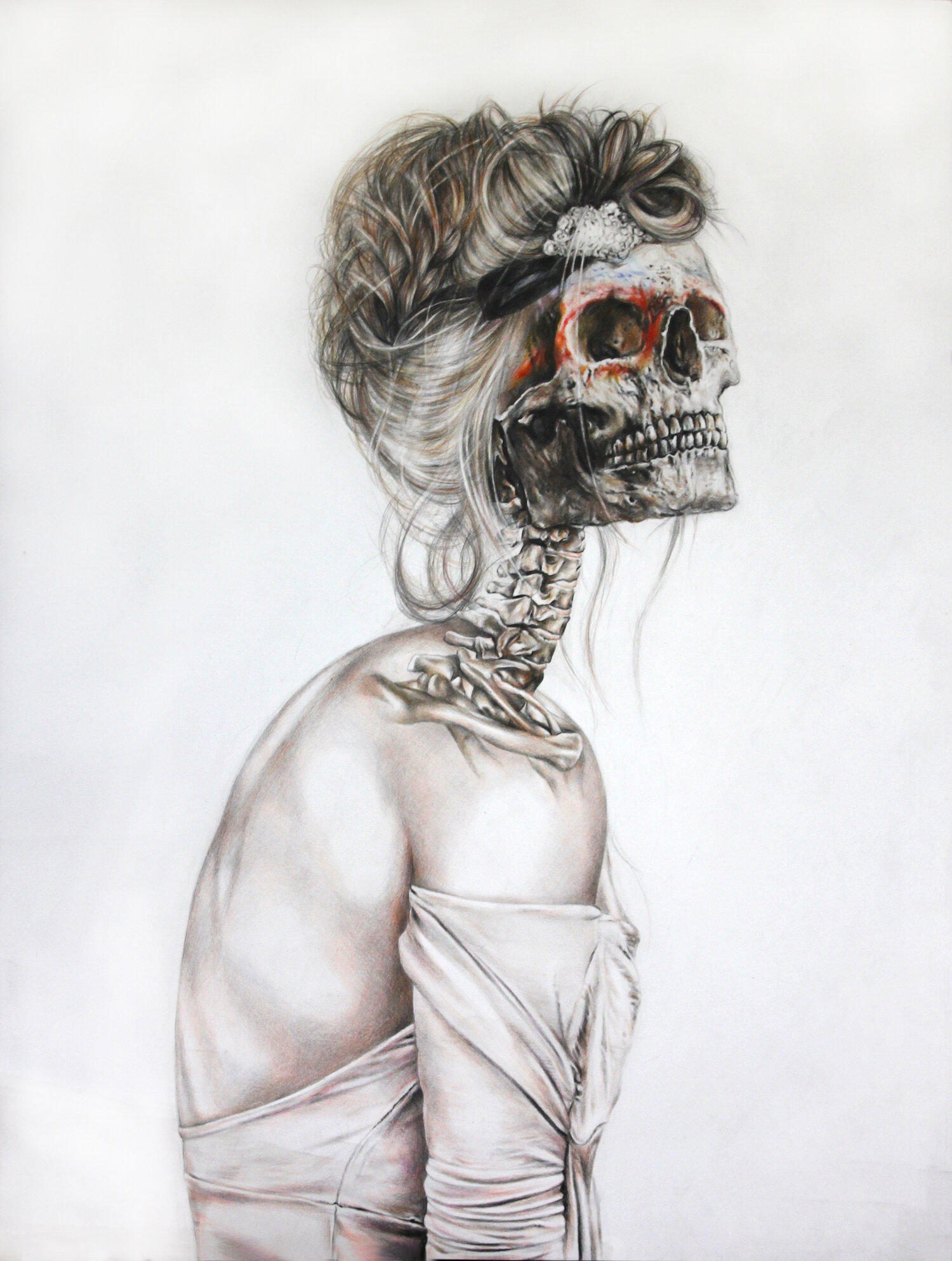Maja Milkowska-Shibata, creator of “Beyond Broken: The Science of Bone Lengthening
and My Ilizarov Story” in the Fall 2024 issue of Intima expresses her appreciation for fellow graphic artist, Gianna Paniagua, whose comic, “Human Experience,” appeared in the Fall 2022 issue.
We Are Not Amazons: A Reflection by Medical Illustrator Mesa Schumacher
In my professional role as a medical illustrator, I'm often drawn to a good metaphor. As a patient, the allure of metaphor can be dangerous.
Read moreA House, Not a Home: Reflecting how imagery can reveal the human psyche byJennie Vegt
One of the images from the Mitwelt Melt Series by Jennie Vegt. Spring 2024 Intima
“Finding meaning in suffering is sometimes the only coping strategy remaining,” says the artist. This series of six paintings explores grief in a visually complex manner.
Carl Jung believed house imagery in dreams represent the human psyche. In both artworks, the houses are familiar structures of shelter that simultaneously represent ominous confinement and isolation. We may be capable of observing and moving past some psychological structures that have become an obstruction, while others feel intertwined with our very being, like a house that fits more like a skull.
Read moreArt as a Body’s Blessing: A Reflection by physician-poet Sarah Piper
Even with the astonishing knowledge of medicine, the anatomy of an illness cannot fully be known from the outside. It takes an act of tender and careful acquaintance. And the only one who can truly map the illness of a living being is the occupant of an ill body. The geography of sickness is mysterious: its borders begin vague, its peaks conceal its valleys, its oceans rove and deepen and rearrange patterns of flood and firm ground.
Read moreThresholds and Doorways: Exploring Mental Health Narratives Through Art by Emory MD/PhD candidate Aubrey Reed
© Beyond the Threshold Aubrey Reed Spring 2024 Intima
My first-ever clerkship rotation as a medical student immersed me in the realm of inpatient psychiatry. This profound and eye-opening experience blurred the boundaries between sickness and health. It challenged my preconceived notions and deepened my understanding of mental illness.
Read moreBefore and After: In Response to “The Face as an Organ of Identity” by California community doctor Katie Taylor
I work at a community clinic with patients who are homeless–there is the stigma of homelessness, and then there is the stigma of looking homeless.
Some patients of mine do not–or do not yet– appear unhoused. It is usually those who still have family that support them, who live in a car, who hold a job—running food for Doordash, picking for Amazon, sitting security—or who have not been homeless for so very long. But many of my patients do appear frankly homeless: a shuffling gait, a blanket draped around their shoulders, belongings pushed in a stroller, blackened teeth, leg wounds.
Endurance and Gratitude: A reflection on finding joy in difficult moments by Laura Carmen Arena
Both Karen George’s poem, and my “Triptych:Oncology Fish,” share an expression of admiration for the resplendent inner strength in our loved ones, emanating despite the foreboding shadows of illness, suffering and loss. The emotions floating around our lived spaces as our loved ones endure and battle disease in the face of difficult circumstances move in many directions including grieving, reflecting, hoping, enduring and celebrating, colors that shift and radiate with the heroically hopeful, illuminating presence of gratitude and love.
Read moreAfter Testimony, Tribute
A testimony and tribute to one writer’s mother who passed away from COVID-19.
Read moreSeeing Through
A retired nurse remarks on what she has witnessed in the hospital setting via studio art and poetry published in this very journal.
Read moreA Transplant Patient's Reflection on Living While Dying
An artist and organ transplant recipient considers the isolation of her own illness experience and further explores these issues in her graphic medicine comic, published in this very journal.
Read moreDesensitization to the Face of Death: A reflection by poet and medical student Catherine Read
A medical student examines the desensitization that imbues the study and practice of medicine—and advocates against it.
Read moreWhen Visuals Become Verbal: The Art of Communicating Emotional States of Mind by Barbara West
© Blue Pajama Series - Crowd by Rachel Wyman Fall 2021 Intima
A writer and hospice nurse explores the parallels between one of her essays published in Intima and a studio art series previously published in this journal.
Read moreGetting it Right, Even When it Feels Wrong: A Reflection by poet Ceren Ege
In his video “Inside Anxiety and Depression,” William Doan’s words “writing is drawing” were a reminder of my existence as a poet and artist, and how the latter is an identity I felt uncomfortable with for a long time. I squirmed at the creation of “art” out of another’s suffering, even though my father’s illness felt like the only thing worth writing about. Now I sit with a different question: whether anyone’s suffering is entirely separate. I think owning suffering defeats the very aim of why we move it to articulation—to release it, to divide the burden of it, and to comprehend it with others.
Read moreAuscultating Meaning: Reflections on the Heart of Medicine by Marc Perlman
© Gordian Knot by Elisabeth Preston-Hsu Spring 2020 Intima A Journal of Narrative Medicine
From diaphragm to earpiece, a stethoscope dutifully chaperones a patient’s internal orchestra to a clinician’s ears. This facile acoustic communication not only allows a provider to screen for a wide host of cardiovascular, pulmonary and gastrointestinal anomalies, but it also may be a conduit for moral reflection.
Read moreReimagining Chaos in Art and Poetry by Selene Frost
Anatomy of the Vogue by Meagan Wu. Fall 2017 Intima: A Journal of Narrative Medicine
I’ve long been fascinated by the way structure informs poetics and the practice (and in this case—reception of medical care). In my piece “Field Notes on Form,” I extol the ways in which linguistic structure has the remarkable ability to organize our thoughts, increase our signal within the noise, and etherealize the mundane. In “Post NICU Villanelle,” Joyelle McSweeney uses language not only to remediate the chaos of loss and of leaving but also to deconstruct both the poetic form and herself.
Read moreHow to Hold Cold Hands by Laura-Anne White
I have spent my career as a nurse working with adult cancer patients. I, too, have experience with the self-protective tool of ‘numbing.’ Last spring, the COVID-19 pandemic hit New York City at full force, and I was temporarily transferred to an inpatient, COVID-19-positive cancer unit. I saw no one aside from co-workers, patients, and other essential workers.
Read moreSpeaking Truth: The Visual Arts Help Clinical Diagnosis by Virali Shah
As a society, we are driven by visuals. Advertisements. Social media. Logos. Paintings. Pictures. It is a 21st century skill to be “visually literate.” Only recently, however, the role of visual literacy has expanded into modern medical training.
Read moreOn (Un)Knowing: A Reflection on the Imagination and the Body by poet Michelle Dyer
©What Lies Beneath by Sapana Adhikari Spring 2020 Intima A Journal of Narrative Medicine
As I lay on the table while the doctor poked and prodded inside my breast, clipping the lump inside me like flower stems, I imagined what the thing might look–what, exactly, lay beneath, and if it had a name.
Read moreMy COVID Hero: How Art Helped Me Reflect on a Global Pandemic by Dr. Brandon Mogrovejo
One late evening, just two months into my intern year in Pediatrics and seven months into a forever changed New York City, I sat down and drew. I drew from a place of anxiety, working the equivalent of two full-time jobs in a hospital during a time when the people I care for, my loved ones and my patients, were under great strain.
Read moreWithin the Outside yet Outside the Within: The Way Art Creates a Liminal Space by Brent Carr
© Man versus Nature versus Man by Ohirenua Giwa-amu. Spring 2020 Intima
Where are these phenomenological crossroads of physician and patient, practitioner of health and the healthy, destroyer of illness and the elusively undefinable concept of disease itself? How can we find such a way of communicating with one another when the path is so clouded by our own perception of self within the world? When we are so seemingly Within the Outside of it, yet Outside of the Within? If the existentialists sure fretted over the taut chords of isolation and apartness in the world, the pandemic has plucked those same chords causing them to vibrate even faster.
Read more








